Transmission spectroscopy is a widespread analysis technique that consists in measuring the absorption produced by a given sample when a beam of infrared light goes through them. Transmission spectroscopy applies mostly to liquids and gases, yet pressed powders or thin-films might also be characterized using this methodology. Besides spectroscopic measurements, transmission measurements are also useful to evaluate the properties of optical components, such as windows and filters. Arcoptix offers many solutions to perform transmission spectroscopy that rely either on our FT NIR or MIR FTIR instruments.
Liquid transmission spectroscopy is a standard spectroscopic measurement method that finds applications in various industrial and applied research fields, such as chemistry, biology, agriculture, food analysis, etc. Liquids are usually probed in the NIR using a fibered setup that includes a cuvette holder, which can host liquid cuvettes of different lengths. This makes the optical setup fairly straightforward to set in place, as no optical alignment is required. Other kind of samples, such as thin films can also be characterized using the same setup or a closely similar one.
 NIR transmission spectroscopy setup. that can be used for liquids or thin-films. All parts can be directly ordered from Arcoptix, except for the cuvette itself.
NIR transmission spectroscopy setup. that can be used for liquids or thin-films. All parts can be directly ordered from Arcoptix, except for the cuvette itself.
In the NIR or the VIS-NIR, a transmission spectroscopy setup can be conveniently assembled using a fibered system that relies on a few elements:
A fiber coupled light source based on a QTH bulb or equivalent such as the ARCLIGHT-NIR. The ARCLIGHT-NIR delivers a stable output and features a built-in blade diaphragm that allows to control the output light power.
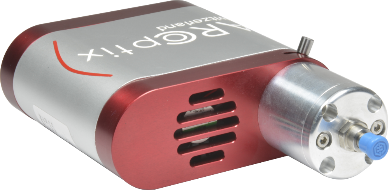 ARCLIGHT-NIR
ARCLIGHT-NIRA cuvette/sample holder with suitable focusing and collecting optics such as the Arcoptix CUV. The Arcoptix CUV can host cuvettes wild optical paths going up to 1cm. It also features a slot dedicated to additional filters (intensity or color) or other samples (thin-films) that can be conveniently mounted with or in place of the cuvette.
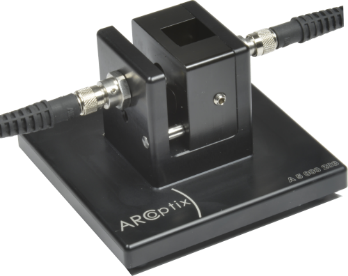 Arcoptix CUV
Arcoptix CUVHigh quality, low-loss optical fibers. Arcoptix offers standard low-OH fused silica fibers with a diameter core of 600um and standard lengths of 0.5m and 1m. Other fibers and fiber configurations (such as bundles) can be available on request, please contact Arcoptix directly for more information.
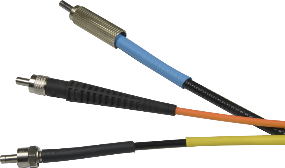 Optical fibers
Optical fibers- A FT-NIR or VIS-NIR fibered coupled instrument. The Arcoptix FTNIR-L1-025-2TE is the perfect tool for obtaining high quality and reproducible spectra with high SNR and sharp resolution. Alternatively, the Arcoptix VIS-NIR-FIB offers a compact and convenient solution for measuring the entire VIS-NIR spectrum down to 350nm. The VIS-NIR-FIB operates by stitching together the spectra acquired by our FT-NIR spectrometer and the one measured by a grating spectrometer for the visible region of the electromagnetic spectrum. Direct compatibility with other fibered systems and accessories is possible thanks to the usage of a Y-shaped fiber bundle that is used to connect simultaneously to the VIS and the NIR port of the instrument.
 FTNIR-L1-025-2TE
FTNIR-L1-025-2TE
 VIS-NIR-FIB
VIS-NIR-FIB
Unlike NIR systems which rely heavily on optical fibers, MIR transmission spectroscopy techniques try as much as possible to work in free-space, as fibers in the MIR are usually lossy and fragile. Owing to their small size and light weight, the Arcoptix FTIR instruments are easily integrated and aligned in any existing setup. To this end, our entire MIR portfolio is by default free-space, while removable fiber couplers are also provided on most units. Furthermore, most of our product line is, or can be made compatible with Thorlabs 30mm cage system, which then eases the usage of common optical parts, including mirrors, filters and so on.
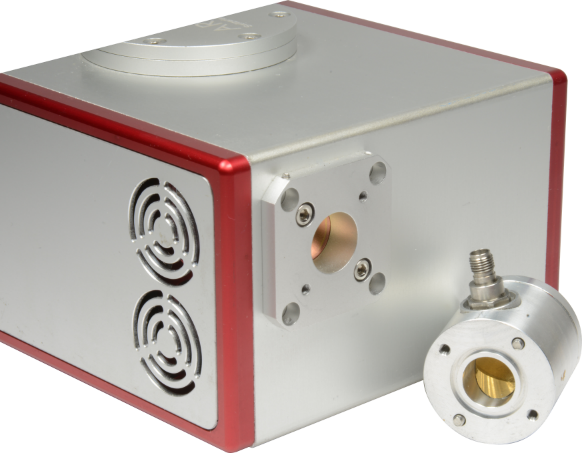 FTMIR-L1-120-4TE free-space input after fiber coupler removal
FTMIR-L1-120-4TE free-space input after fiber coupler removalTransmission spectroscopy can be achieved by placing a sample directly in the beam path, while the instrument and light source are simply standing on a desktop or an optical table, as illustrated here below with the ARCLIGHT-MIR and the FMTIR-L1-120-4TE.
 Measurement of a liquid deposit on a ZnSe substrate using the ARCLIGHT-MIR and the FTMIR-L1-120-4TE
Measurement of a liquid deposit on a ZnSe substrate using the ARCLIGHT-MIR and the FTMIR-L1-120-4TE
Some applications have stricter requirements, for instance the might require to work in a purged environment or at least limit the interaction length of the infrared beam with molecules present in ambient air (typically H2O and CO2). This usually implies that the instrument and its light source will have to be paired or adapted to a sample compartment or a custom gas cell, or even that the instrument needs to be entirely integrated to an existing measuring system. In that case, Arcoptix offers two models of rugged and compact OEM FTIR spectrometers, which offer extensive options for integration and customization. The OEM010 is a fully integrated unit with a built-in light source, interferometer and detector. The OEM011 is extremely similar, except for the detector that lies in an external module, thus offering more flexibility.
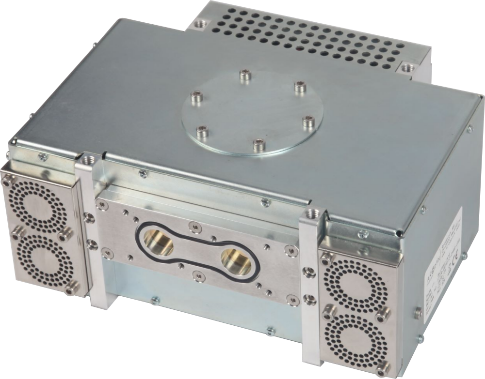 FTIR-OEM010-120-4TE
FTIR-OEM010-120-4TE
 FTIR-OEM011-120-4TE
FTIR-OEM011-120-4TE
Various accessories can be mounted on both models of OEM FTIR, such as flat or parabolic mirrors that can be used to couple light into a fiber or a waveguide, or simply redirect the beam to other components. Arcoptix also has extensive expertise in designing and prototyping sampling accessories, which can be tailored for specific applications.
 Operating principle of the OEM-PART-CMP
Operating principle of the OEM-PART-CMPFor example, the OEM-PART-CMP is a standard accessory for the OEM010 that was inspired by customers requirements. This input/output module holds a beamsplitter and a set of flat mirrors that allow to send and collect light along the same path (common path configuration). This configuration was successfully used to perform transflectance spectroscopy on thin films that were deposited on a transparent substrate (ZnSe). Light was focused on the sample by mounting a parabolic off-axis reflector to the OEM-PART-CMP.
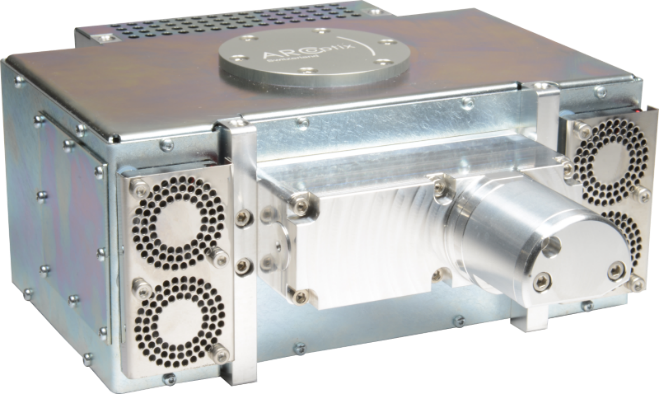 Configuration for transflectance spectroscopy based on the FTIR-OEM010-120-4TE and the OEM-PART-CMP
Configuration for transflectance spectroscopy based on the FTIR-OEM010-120-4TE and the OEM-PART-CMPAnother example is illustrated here below, where the OEM-PART-CMP was coupled to a custom made flow cell with a short path of only 1.5mm. This enabled to perform liquid transmission spectroscopy on a high pressure, high temperature, low volume of liquid.
